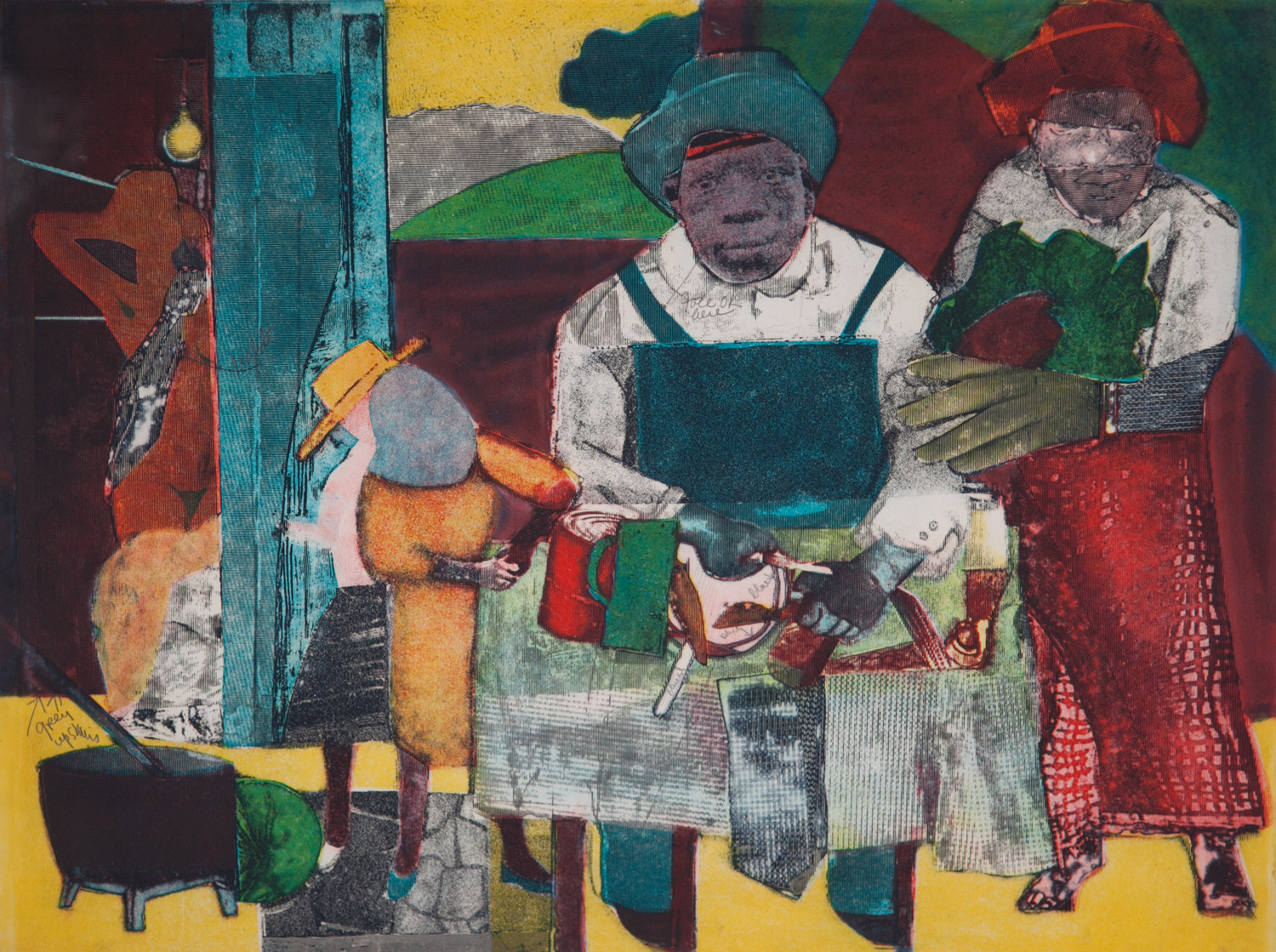Romare Bearden's world
Hofstra University Museum exhibit salutes the innovative artist
Romare Bearden’s eye on African- American life in the 20th century reflected a universal humanity that is relatable to all. Through his innovative artistic lens, he communicated ideas and thoughts about the modern African-American experience and its relationship to the world at large. He integrated his dazzling into American modernism — through a variety of mediums, notably printmaking.
Those prints are on view at Hofstra University Museum, in its new exhibit, “Romare Bearden: Storyteller,” which runs through Aug. 17.
“Romare Bearden was not just a prominent African-American artist, he was a prominent American artist of the 20th century,” says Karen Albert, Hofstra Museum’s deputy director and chief curator. “He took his personal experiences and revealed how universal those experiences are, relative to a larger idea and humanity as a whole.”
The 22 prints in the exhibit demonstrate Bearden’s skills in a variety of methods: aquatint, engraving, etching, lithograph, and silkscreen.
“His experiments in printmaking broke new ground, allowed him to recreate his imagery in multiples and make his work available to a wider audience,” Albert says, noting the works “reflect the strength of our permanent collection.”
“They have different colorations and you can see how the image was developed and see his process. Bearden would pull a print off the press and see what he would want to change. You will see that the final piece [of the series] has more detail and reveals a lot about his process.”
He experimented with many mediums and styles, but is perhaps best known for his collages, two of which appeared on the covers of Fortune and Time magazines in 1968.
“The collage method worked well for what he was trying to do,” says Albert. “He had his point of view and wanted to get it across and show the universality of it all.”
Bearden began to create these collages in the 1960s out of cut and torn magazine photographs that he reassembled into powerful visual statements on African-American life. He incorporated pattern and surface design, achieving multi-layered images.
“The collage method worked well for what he was trying to do,” says Albert.
His collages, watercolors, oils, photomontages and prints are imbued with visual metaphors from his past in Mecklenburg County, N.C., Pittsburgh, Pa. and Harlem and from a variety of historical, literary and musical sources.
Nancy Richner, director of the Hofstra University Museum, adds, “Bearden’s work inspires us to look and listen closely, to reflect and ask questions about our expectations and assumptions about art, intent and universality, and to embrace the powers of creativity in telling stories that need to be told.”
That creative vision comes to the forefront in his series “Odysseus Suite,” based on Homer’s “The Odyssey.” He reinterprets Homer’s class tale through the eyes of an African-American man. Rich in symbolism and allegorical content, the series created an artistic bridge between classical mythology and African-American culture.
As always the museum offers additional programming to enhance the exhibit experience. Upcoming events include the family workshop “Improv Jazz!,” on Feb. 21, 1-2:30 p.m. Led by Napoleon Revels-Bey, kids — ages 8 and up — can expand their musical knowledge while enhancing imaginative thinking, creativity, and a respect for their own and others’ cultural heritage. Advance registration is required.
Closing out the month, on Feb. 28, 4:30-6 p.m. (Civil Rights Day), the exhibit serves as a catalyst for a roundtable conversation, “Perceptions and Reality.” Hofstra faculty explores how unexamined assumptions shape our cultural and personal understanding of the world, and how expanding our awareness can transform our thinking.
Next month features “Jazz at the Museum,” on March 12, 6-8 p.m.
The Hofstra Jazz Quartet offers up a musical tribute to Bearden Hear selections from the album “Romare Bearden Revealed,” recorded by saxophonist Branford Marsalis, among other tunes, in celebration of the obvious as well as less tangible connections between the jazz Bearden loved and the artwork it inspired.
Romare Bearden: Storyteller
When: Saturday and Sunday, noon-4 p.m.; Tuesday through Friday, 11 a.m.-4 p.m. Fees are charged for related programs.
Where: Emily Lowe Hall, South Campus, Hempstead. (516) 463-5672 or www.hofstra.edu/museum.

 43.0°,
A Few Clouds
43.0°,
A Few Clouds 




